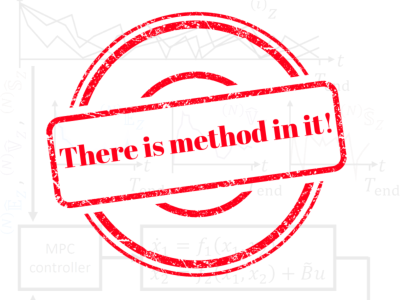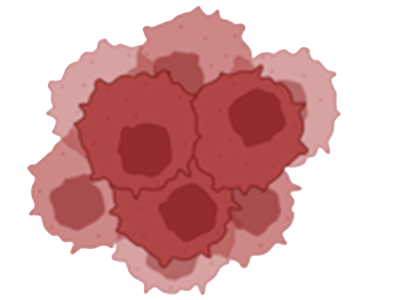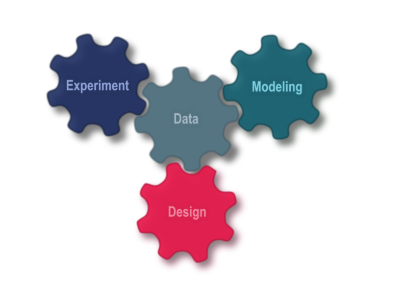Examples of agonist–antagonist muscle pairs include the biceps and triceps as well as the fibularis longus (back of the lower leg) and tibialis anterior (front of the shin).
Muscles interact with each other through neuronal feedback (i.e., electrical signals transmitted between muscles and the nervous system). During amputations, this interaction is partially or completely disrupted depending on the amputation site. The new agonist-antagonist myoneural interface (AMI) amputation technique reconnects paired muscles (e.g., agonist and antagonist) via a tendon. This allows the original functions of the muscle (e.g., stretching and contracting) to be preserved and proprioception to be reconstructed. Proprioception, often referred to as our “sixth sense,” allows us to perceive body position in space and detect muscle tension.
Restoring proprioception in amputated limbs improves motor control of the residual limb and thus prosthetic control. It also helps reduce phantom pain. The AMI technique requires pre-stretching of the remaining muscles. This ultimately influences the range of motion of the muscle.
Interaction of agonist and antagonist muscle pair

Computer models can support this surgical technique by simulating the optimal pre-stretching of the muscle. Modeling this complex system requires the collaboration of scientists from different disciplines. Robin Lautenschlager, doctoral researcher at SimTech, explains: “Biomechanists first consider how an amputation and muscle behavior can be expressed mathematically. They describe the entire system and make it computable.”
A multi-X model incorporates multiple spatial and temporal scales (multi-scale) as well as various interacting physical phenomena and materials (multi physics).
This creates a highly complex multi-X model composed of coupled equations. “For example, it includes equations describing muscle deformation and signal transmission through muscle fibers. We also have chemical processes that take place when the muscle is activated so that one muscle is activated and the other is inhibited,” explains Lautenschlager. This is also expressed in equations. Depending on the model, there are up to 50 individual equations that describe these processes.
Running muscle simulations
For the model to work, values must be exchanged between equations. This is where the work of SimTech doctoral researcher Carme Homs-Pons begins. The physicist and computer scientist develops methods and algorithms for combining and solving these equations on the computer. “I essentially conduct experiments on the computer”. By experiments, Homs-Pons means simulations.
One method she uses is trial and error. In this way, it gradually approaches the exact solution: “Let’s assume I have a simulation in which the muscle is activated in a certain way. I run the simulation and it works. I then go one step further, activate the muscle in a more precise way, and run the simulation again. If a problem occurs, I have to go back and find out where the problem lies.” Once she has identified the problem, she usually also knows the solution. “The tricky part is usually finding out what’s going wrong. You then simply have to try again with a new solution. You have to try out a lot — just like with experiments in the lab.”
OpenDiHu is a high-performance, open-source software for the detailed, systemic simulations of skeletal muscles. OpenDiHu solves multi-scale models, including 3D muscle mechanics, electromyographic signal analysis, action potential propagation in muscle tissue, sub-cellular bio-chemo-electrical processes, and neural muscle control.
She uses the OpenDiHu software, which can simulate the functioning of muscles in high spatial and temporal resolution, and is developing it further. Homs-Pons can then use it to map on the computer how muscles and tendons behave depending on how they are activated, which electromyographic signals they receive, or which bio-chemo-electrical processes take place.
Electromyographic signals are generated when muscles are activated (e.g., when they contract). They can be measured directly on the skin using electrodes. Homs-Pons wants to improve the OpenDiHu software so that muscle models are even more realistic. She also had to acquire the necessary knowledge in biology for this. “I had to understand the basics of muscle modeling and get a minimal overview of the biological processes because otherwise it’s quite difficult to detect errors. You need to have an idea of what should be going on and what makes sense or not.”
Data protection makes more realistic geometries difficult
The muscle geometries (i.e., the actual appearance of the muscles) can be obtained from images. “There are studies conducted on cadavers. These are quite useful because they provide accessible muscle geometries on line. The data is anonymized—just like in medical studies,” explains Homs-Pons. For example, the biceps can be simulated with the OpenDiHu software. The geometry approximates the actual appearance of the muscle.
“However, obtaining patient-specific muscle geometries from living individuals can be challenging because of data protection laws,” explains Homs-Pons. As a next step, she wants to try to gain access to images from colleagues who are researching the tibialis muscle. This is why the leg muscles are initially shown as cuboids. The next challenge is integrating the muscle–tendon–muscle system into OpenDiHu so the leg muscles can be visualized in their actual geometry.
“I doubt we’ll ever create a perfect model, but we might develop one precise enough for doctors to use.”
Carme Homs-Pons, SimTech doctoral researcher
What is a good model?
But defining what makes a good model is not straightforward. “Sometimes it’s obvious. If I visualize a muscle and notice that it looks incorrect, it’s clear that my simulation has failed. Defining what is correct is actually harder than identifying errors. The challenge lies in determining how closely we can represent reality,” says Homs-Pons. You have to decide that first.
“For example, I model muscles and their internal processes. But we don’t really know what occurs inside a living muscle in motion because there is no way to observe it directly. There is no non-invasive way to see what is going on. It is therefore somewhat difficult to judge how good the models are. What you can do is judge whether something is wrong. If a model looks good, I refine it further. But this is a never-ending process. I doubt we’ll ever create a perfect model, but we might develop one precise enough for surgeons to use.
Pre-stretching of the muscle is crucial
One last step is needed for this to happen: the work of Robin Lautenschlager. “We have developed a mathematical model, implemented it in a computer program, and created an executable muscle simulation in which parameters such as activations and muscle lengths can be adjusted. At this stage, I step in to implement the medical requirements for amputation,” explains Lautenschlager.
The requirements primarily concern how far the muscle must be pre-stretched when the agonist and antagonist are connected to each other by the tendon. Lautenschlager receives instructions and feedback from surgeon and amputation expert Jennifer Ernst, who performs the new amputation technique at Hannover Medical School. The pre-stretch of the muscle determines the behavior of the muscles after the amputation. If the muscles are loose before they are connected by the tendon, they behave differently than if they are tense and then connected.
Here, too, the question arises: What is a good pre-stretch? “One of the doctor’s requirements could now be that the range of motion is maximum or has a certain length. Even with an amputation, you want the muscles to be able to move as much as possible,” explains Lautenschlager. That is the aim of his research. To do this, he must first find the optimum parameters for the pre-stretch because too much pre-stretching can cause the muscle to tear. “And that’s where the math comes in. I have a value that I want, and now I have to find out which input parameters match it.”
How do you determine the correct input to achieve the desired output?
This is called an inverse problem because the input parameters are not known. The pre-stretch is one such input parameter. You know what you want to get in the end: a certain range of motion. But you don’t know the input value. His challenge now is to find the appropriate mathematical methods to solve this inverse problem.
The expected value indicates which values can be expected on average. The standard deviation indicates how far the values deviate from the expected value. Both are an indicator of how likely it is that a certain value will be reached.
This means that he has to find an algorithm that provides him with the input parameters to simulate the pre-stretch of the muscles using Homs-Pons’ model. “If I then have a value as a result, the question arises: How much can I trust it? Is it good or bad? Safe or unsafe?” says Lautenschlager.
He therefore uses Bayesian parameter inference. This statistical approach works with probabilities and assigns an error to the simulation. Uncertainty is essentially built into the model. This gives Lautenschlager a probability distribution with expected value and standard deviation. He can then use this to determine which input value is most likely to contribute to the desired result. He uses the Markov Chain Monte Carlo method for this.
“I start with a randomly selected input, simulate it, and get an output. Then I look at how good this output is compared to my observed data. If it’s bad, I discard it. If it’s good, I keep it,” explains Lautenschlager. This is the principle of the Markov chain: It builds a chain from one input to the next and receives a distribution of points or values that are possible as input for the results. “And the method works surprisingly well — at least for the use cases we have,” says Lautenschlager.
Simplified surrogate models to speed up the simulation
The problem lies in the time required for the simulation. “For this method, I must repeatedly run the forward simulation testing new input examples each time.” Depending on the method, a simulation run can take several days or weeks. This is infeasible before a surgery. “That’s why I’m designing a surrogate model. This simplified model replaces the forward problem, which is the complex muscle simulation with many equations in OpenDiHu. It runs much faster than the actual model,” Robin Lautenschlager.
“In other words, we first came up with a highly complex model, from modeling to simulation, which should describe the muscles as well as possible. I’m now simplifying this model again—of course, motivated by the complicated model,” he continues. To do this, he uses machine learning methods. Using the input and output data from the simulation, he trains a neural network that learns how to map the input data to the output data. Using the surrogate model, the simulations take only a few minutes to a few hours.
“In order for Robin to develop his model, he has to validate it with mine. This means that to know that the simplified model works, you have to compare it with the fine model and see that they give the same results,” explains Homs-Pons. “His simulation must learn the result of my simulation.” This is an iterative process in which both run their simulations, compare them, and adapt them again.
The research has not yet been completed. Even if scientists solve the problem, it won’t be possible to run this simulation before every amputation and obtain precise values. “Our research is still a long way from supporting patient-specific simulation. However, we could already provide surgeons with useful insights because we offer them a platform on which they can play with parameters and find out their effects,” Robin Lautenschlager.
Manuela Mild | SimTech Science Communication
The project “Modelling, Simulation and Optimisation for Agonist-Antagonist Myoneural Interface Surgeries” is part of SPP 2311: Robust coupling of continuum-biomechanical in silico models to establish active biological system models for later use in clinical applications - Co-design of modeling, numerics and usability, funded by the German Research Foundation DFG.
Principal investigators:
- Dominik Göddeke, Institute of Applied Analysis and Numerical Simulation (IANS), University of Stuttgart
- Miriam Schulte, Institute for Parallel and Distributed Systems (IPVS), University of Stuttgart
- Oliver Röhrle, Institute for Modelling and Simulation of Biomechanical Systems (IMBS), University of Stuttgart
More information
Read more
C. Homs-Pons, R. Lautenschlager, L. Schmid, J. Ernst, D. Göddeke, O. Röhrle and M. Schulte, Coupled simulations and parameter inversion for neural system and electrophysiological muscle models, GAMM-Mitteilungen. 47 (2024), e202370009. https://doi.org/10.1002/gamm.202370009
Maier, B.; Göddeke, D.; Huber, F.; Klotz, T.; Röhrle, O. & Schulte, M. (2024). OpenDiHu: An Efficient and Scalable Framework for Biophysical Simulations of the Neuromuscular System, Journal of Computational Science. https://doi.org/10.1016/j.jocs.2024.102291
About the scientists
Carme Homs-Pons studied physics at the Universitat Politècnica de Catalunya in Barcelona. She opted for classical physics in which simulation is the most important subject area. She acquired the necessary computer and programming skills in the “Computational Science and Engineering” Master’s program at the Technical University of Munich. At the University of Stuttgart, she was interested in the biomechanical application of the topic for her doctoral degree studies. Since 2022, she has been pursuing her doctorate in SimTech with Prof. Miriam Schulte in the area of neuromuscular simulations and in Priority Program 2311 (SPP 2311). She likes the idea that her work could help to improve human health in the long term.
Robin Lautenschlager studied mathematics at the University of Stuttgart for his Bachelor’s and Master’s degrees. He loves numerics (i.e., finding algorithms for mathematical problems and programming them). But he also likes it when his solutions contribute to real applications in physics, biology, and economics. Since 2022, he has been pursuing his doctorate under Prof. Dominik Göddeke in SimTech and in Priority Program 2311 (SPP 2311). Because he enjoys doing sport himself, he finds it exciting to deal intensively with the subject of muscles and to simulate the system.
















